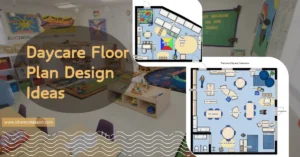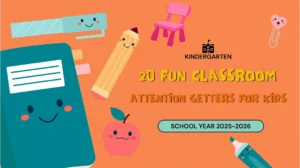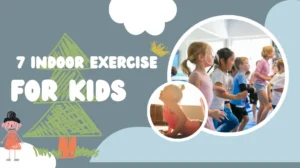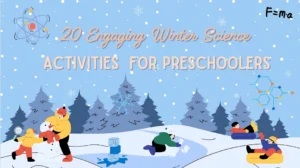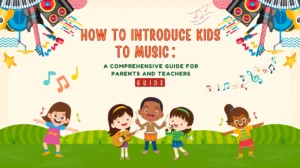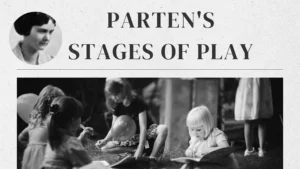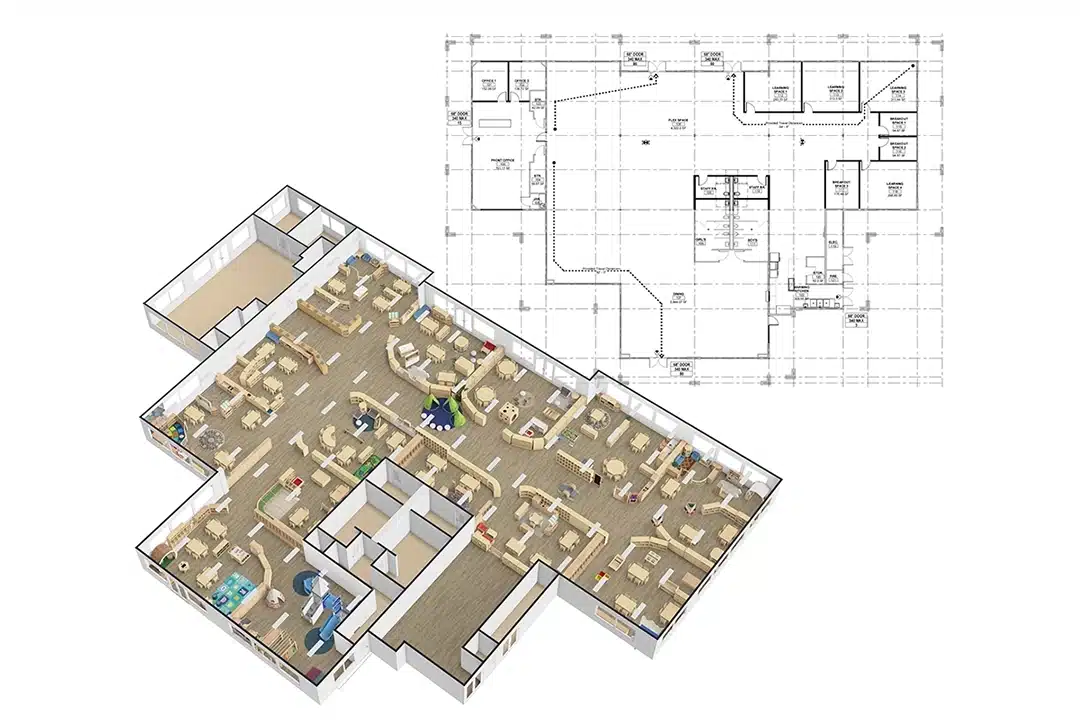Managing classroom behavior is one of educators’ most common and challenging tasks. Despite using rules, reminders, and consequences, many teachers still deal with off-task behavior, lack of motivation, or classroom disruptions. Is there a more effective, encouraging way to guide student behavior and promote engagement? More and more educators are turning to positive reinforcement as a proactive alternative. But what exactly does it involve, and why is it gaining popularity in schools?
Positive reinforcement focuses on rewarding good behavior rather than punishing bad. It encourages students to repeat positive actions by linking them to praise, recognition, or small rewards. This method builds motivation and fosters a respectful classroom culture. When used consistently, it leads to better academic and social outcomes. Teachers become guides, not just enforcers, through positive reinforcement.
To use positive reinforcement effectively, educators need more than just good intentions. They need a clear understanding of how it works, why it works, and how to make it sustainable in a busy classroom. In this article, we’ll break down the science and strategies behind positive reinforcement. Ready to make classroom management more effective and encouraging? Please keep reading!
What Is Positive Reinforcement?
Positive reinforcement is a behavioral strategy rooted in operant conditioning, where a desirable stimulus is presented immediately after a behavior to increase the likelihood that the behavior will be repeated. In educational settings, this often means recognizing and rewarding positive student actions, such as participation, effort, or respectful behavior, to encourage their recurrence.
Unlike punishment, which seeks to reduce or eliminate undesired behavior through negative consequences, positive reinforcement focuses on promoting good behavior through encouragement and rewards. It builds a constructive and affirming environment where students are motivated to act appropriately in order to receive recognition or rewards.
Basics of Operant Conditioning
To fully understand how positive reinforcement works, it’s helpful to explore the theory that underpins it: operant conditioning. Operant conditioning is a learning theory developed by psychologist B.F. Skinner. It explains how behaviors are influenced by their consequences. According to this theory, behavior is shaped by reinforcement (which increases the likelihood of a behavior) and punishment (which decreases it).
There are four main types of consequences:
- Positive reinforcement (adding something pleasant to increase behavior)
- Negative reinforcement (removing something unpleasant to increase behavior)
- Positive punishment (adding something unpleasant to decrease behavior)
- Negative punishment (removing something pleasant to decrease behavior)
Among these, positive reinforcement is particularly effective in educational environments because it builds a positive and supportive classroom culture while encouraging desired behavior.
Types of Positive Reinforcement
There’s no one-size-fits-all approach when it comes to positive reinforcement in the classroom. Understanding the different types helps teachers choose the most effective methods based on student needs, age groups, and classroom dynamics. Below are four commonly used types of positive reinforcers, each with its unique strengths.
Natural Reinforcers

Natural reinforcers are outcomes that occur directly and logically as a result of a student’s actions—without any deliberate intervention from the teacher. These are often the most sustainable and authentic forms of positive reinforcement, as they help students internalize the value of their behavior.
For example, when a student studies hard for a quiz and receives a high grade, that success becomes a natural reinforcer. Similarly, if a child shares supplies with a classmate and receives gratitude or friendship in return, the positive social outcome reinforces that kind behavior. These reinforcers help bridge classroom experiences with real-world consequences, encouraging intrinsic motivation and long-term behavioral growth.
Social Reinforcers
Social reinforcers involve human interaction and emotional recognition. They are among the most powerful and accessible tools teachers can use to encourage positive behaviors. These reinforcers include verbal praise, smiles, gestures, positive notes, or even public recognition in front of peers.

For example, saying, “I’m proud of how you led your group today,” provides both affirmation and a clear behavioral cue. High fives, thumbs-up gestures, or peer applause for a job well done also fall into this category. Social positive reinforcement helps students feel seen, appreciated, and connected to their learning environment. It is especially effective for building self-esteem and fostering respectful classroom relationships.
Tangible Reinforcers

Tangible reinforcers are physical items given to students in response to desirable behavior. These can include stickers, small educational toys, certificates, pencils, snacks, or personalized items like bookmarks or badges. These types of reinforcers are often most effective for younger children who respond well to concrete, visible rewards.
However, while tangible positive reinforcement can be highly motivating, it’s important to use it strategically. Over-reliance on material rewards can sometimes lead to dependency, where students only behave well for the prize. To avoid this, tangible reinforcers should be used alongside social or natural reinforcers and gradually phased out as intrinsic motivation develops.
Token Reinforcers
Token reinforcers are symbolic rewards—like points, stickers, or tokens—that students can accumulate and later exchange for a preferred item, activity, or privilege. This system is often called a “token economy,” and it’s especially useful in structured classroom environments or behavior intervention plans.

For example, a student might earn a star for each day they complete homework or show good behavior. After earning five stars, they might trade them in for extra computer time or the chance to lead a class game. Token positive reinforcement teaches delayed gratification, goal-setting, and self-regulation. It works well for individual students as well as for group reinforcement when the entire class earns tokens together.
Positive Reinforcement Examples
Real-life examples from everyday classroom settings make the concept of positive reinforcement easier to understand. Below are several classroom-based scenarios that demonstrate how teachers use positive reinforcement to encourage desired behaviors:
- Completing Homework on Time
A third-grade student turns in her homework for five days in a row. The teacher rewards her consistency with a “Homework Star” badge and allows her to pick a book from the class library. This motivates the student and her peers to complete their assignments regularly. - Raising Hands Before Speaking
During a group discussion, a student patiently raises his hand instead of calling out. The teacher responds immediately with, “Thank you for raising your hand—that’s very respectful!” Over time, more students raise their hands to receive the same recognition. - Helping a Classmate
A child notices that a classmate is struggling to open a milk carton at lunch and offers to help. The teacher sees this and awards a “Kindness Token” that can be traded for a privilege like being the line leader. This encourages others to show similar acts of kindness. - Staying Focused During Independent Work
A student who normally gets distracted manages to stay focused for the entire work period. The teacher gives him a sticker and writes a note home praising his effort. This kind of targeted reinforcement can help improve attention and work habits.

Why Is It Important to Use Positive Reinforcement in the Classroom?
Creating a classroom environment that promotes respect, motivation, and productive behavior is no small task. Teachers constantly balance academic instruction with behavior management. This is where positive reinforcement becomes not just helpful but essential. It’s more than just praising students or handing out rewards; it’s a powerful teaching strategy that shapes behavior, builds character, and enhances overall learning outcomes.
Encourages Positive Behavior
By recognizing and rewarding desired behaviors, teachers reinforce what is expected in the classroom. Students are more likely to repeat behaviors that result in praise or rewards, such as raising hands before speaking, helping peers, or completing assignments on time. Over time, these behaviors become internalized, reducing the need for constant supervision or correction.
Builds Student Confidence and Motivation
When students receive positive feedback for their efforts, they begin to see themselves as capable learners. This boosts their self-esteem and intrinsic motivation to succeed. Whether it’s verbal praise, a note home, or a small reward, reinforcement tells students, “You’re doing something right,” which encourages them to keep trying—even in challenging situations.
Improves Classroom Management
Classrooms that rely on positive reinforcement tend to experience fewer behavioral disruptions. By consistently reinforcing good behavior, teachers create a more structured and respectful learning environment. Students are more likely to follow rules and routines when they know appropriate behavior leads to recognition or privilege.
Strengthens Student-Teacher Relationships
Positive reinforcement fosters a warm and trusting relationship between teachers and students. When students associate their teachers with fairness, encouragement, and appreciation, they are more likely to feel safe, respected, and emotionally supported. This trust enhances student engagement and cooperation.

Supports Long-Term Social and Emotional Development
Using positive reinforcement helps students learn important life skills such as empathy, responsibility, and perseverance. Reinforcing behaviors like kindness, honesty, and teamwork nurtures students’ emotional intelligence and prepares them to interact respectfully with others both in and outside of school.
Positive Reinforcement Vs Negative Reinforcement
In behavior management and educational psychology, the terms positive reinforcement vs negative reinforcement are often misunderstood or used interchangeably. While both strategies aim to increase the likelihood of a behavior recurring, they operate through fundamentally different mechanisms. Understanding the distinction is essential for applying them appropriately in the classroom.
Definition and Core Concept
- Positive reinforcement involves adding a desirable stimulus after a behavior to increase the likelihood of that behavior recurring.
Positive reinforcement Example: Praising a student for turning in homework on time, which encourages them to do it again. - Negative reinforcement involves removing an unpleasant stimulus after a behavior to increase the likelihood of that behavior recurring.
Negative reinforcement Example: Excusing a student from extra homework because they stayed focused in class.
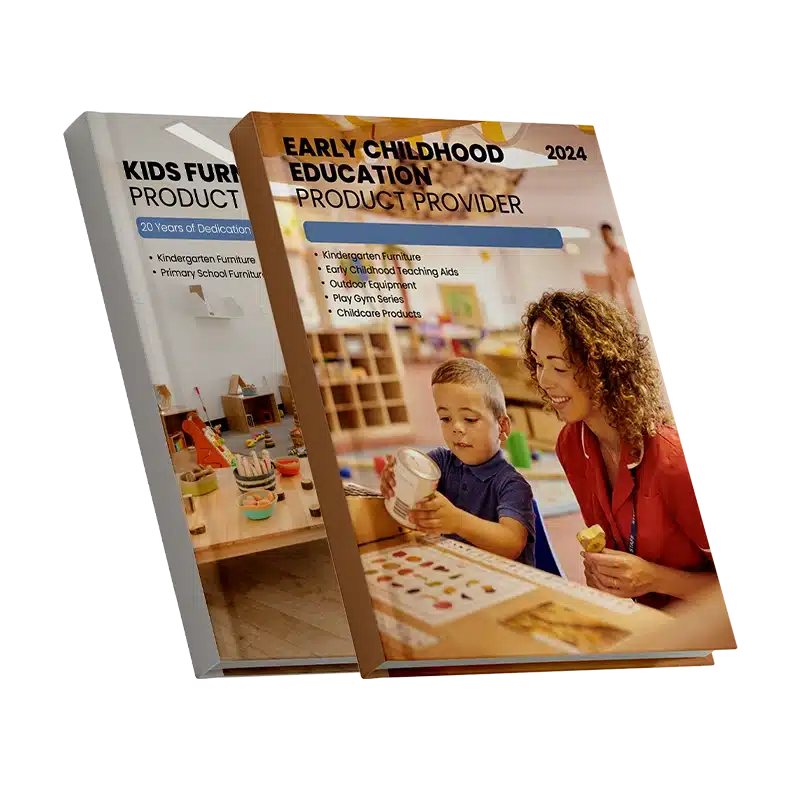
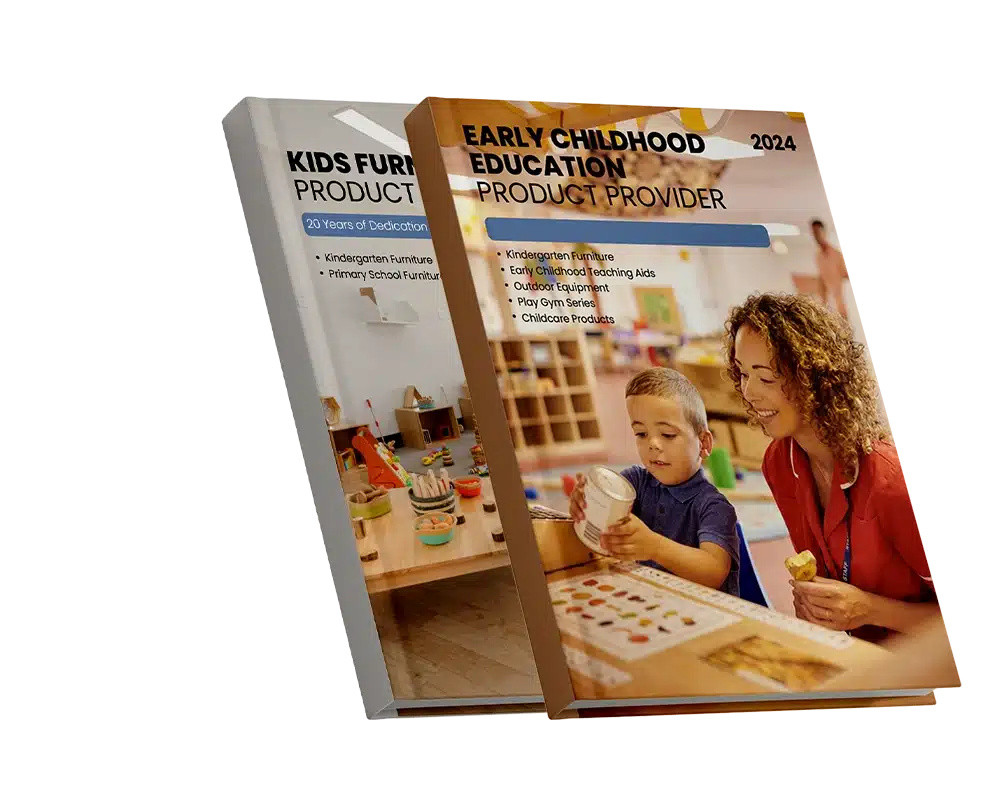
Student Perception and Emotional Impact
One key advantage of positive reinforcement is the emotional response it creates. Students often feel recognized, appreciated, and motivated when they receive positive feedback or rewards. It builds confidence and strengthens student-teacher relationships.
Negative reinforcement, on the other hand, may still be effective but can be misunderstood as a form of punishment. While it can motivate behavior, it doesn’t always create the same emotional connection or positive classroom culture that positive reinforcement does.
When to Use Each Approach
- Positive reinforcement is ideal for everyday behavior shaping, promoting classroom routines, and building long-term habits. It encourages intrinsic motivation and a positive learning environment.
- Negative reinforcement can be useful in specific situations, especially when dealing with behavioral challenges or anxiety. For example, removing a stressful task or stimulus after a student displays the desired behavior.
Which Is More Effective?
Positive reinforcement is considered more developmentally appropriate and effective in most educational settings, particularly with younger children. It promotes a positive classroom atmosphere, helps build student-teacher relationships, and supports emotional growth. Negative reinforcement, though valid, requires careful implementation to ensure it doesn’t create unintended pressure or avoidance behaviors.
Practical Applications of Positive Reinforcement
Positive reinforcement is a versatile behavioral tool that extends far beyond general classroom use. Its principles are widely applied across educational, clinical, and therapeutic settings to encourage desired behaviors, support emotional development, and improve social functioning. Below are key domains where positive reinforcement plays a critical role.
1. Classroom Management
In mainstream education, positive reinforcement is a foundational strategy for managing student behavior and fostering a positive learning environment. Teachers use it to:
- Encourage participation, listening, and cooperation
- Reinforce routines and classroom expectations
- Improve task completion and focus
2. Supporting Students with Special Needs
For students with learning differences, autism spectrum disorder (ASD), ADHD, or emotional and behavioral disorders, positive reinforcement is often integrated into Individualized Education Programs (IEPs) or Behavior Intervention Plans (BIPs). It is used to:
- Reinforce communication, self-regulation, and social skills
- Replace problem behaviors with appropriate alternatives
- Build structure and predictability

3. Therapeutic and Clinical Interventions
Positive reinforcement is a central technique in psychological and behavioral therapies—especially Applied Behavior Analysis (ABA). Therapists use it to:
- Modify maladaptive behaviors
- Promote independence and life skills
- Establish new cognitive-behavioral patterns
4. At-Home Behavior Support
Parents and caregivers also use positive reinforcement to shape behavior at home. It can be informal, like praising a child for helping with chores, or structured, like using a sticker chart to encourage morning routines. Consistency and alignment with what is used in school or therapy help reinforce desired behavior across environments.
How to Effectively Use Positive Reinforcement?
To apply positive reinforcement successfully, it’s important to move beyond casual praise or occasional rewards. Effective use of this strategy requires thoughtful planning, consistency, and responsiveness to the individual needs of students. The steps below will guide you through a structured yet flexible approach that can be adapted to various learning environments.
1. Define the Target Behavior Clearly
Start by identifying the specific behavior you want to reinforce. The behavior should be observable, measurable, and framed positively. Instead of vague expectations like “be good,” focus on precise actions such as “turn in homework on time,” “use kind words,” or “stay seated during group time.” Clear definitions help both the adult and the child understand what is expected.
2. Select an Effective Reinforcer
Once you’ve defined the behavior you want to reinforce, the next step is to decide what will serve as a meaningful reinforcer. This doesn’t have to be elaborate or material—it just needs to be something the student values and is motivated by.
Think about what each individual student responds to best. For some, a simple “Well done” is enough. For others, being chosen as the group leader or having extra drawing time can be powerful motivators. If you’re unsure, observe the student’s preferences in class or involve them in choosing their own reinforcers. What matters most is that the reinforcement feels relevant and rewarding to them.

3. Reinforcement Immediately and Consistently
Timing is critical. Reinforcement should occur as soon as possible after the desired behavior. This helps the learner make a direct connection between their action and the positive outcome. In the early stages of behavior shaping, consistency matters even more. Reinforcing the behavior every time it occurs helps to solidify the habit.
4. Foster Intrinsic Motivation Over Time
While external reinforcers are helpful initially, the long-term goal is to cultivate internal motivation. As behaviors become habitual, begin to reduce tangible rewards and shift toward verbal recognition and opportunities for autonomy. Encourage students to reflect on how their behavior contributes to their success and to the classroom community.
5. Be Consistent and Fair
Consistency builds trust and ensures that reinforcement is seen as fair and predictable. Students need to know that expectations are the same for everyone—and that positive behaviors will be acknowledged equally across the class. Use reinforcement regularly, but with discretion, ensuring it’s tied directly to the behavior you want to promote.
6. Use the Right Reinforcement Schedule
Once a behavior begins to take hold, the timing and frequency of reinforcement—known as the reinforcement schedule—play a vital role in how stable and lasting the behavior becomes. Choosing the right schedule helps you move from building new habits to sustaining them over time.
Continuous reinforcement (reinforcing every correct behavior) is most effective early in the learning process. It helps students make a strong connection between their actions and the reward. However, intermittent reinforcement becomes more powerful and sustainable once the behavior becomes more consistent. This means providing reinforcement only some of the time, either randomly or on a fixed pattern. Intermittent schedules keep students engaged without making them dependent on constant external rewards.
There are several types of intermittent reinforcement schedules, but in classroom practice, two are most commonly used:
- Fixed ratio: Reinforcement is given after a set number of correct responses (e.g., every 3 times a student turns in homework).
- Variable ratio: Reinforcement is provided unpredictably, but still based on behavior (e.g., occasionally praising students for lining up quietly, not every time).
This gradual shift builds intrinsic motivation. Students begin to focus on the satisfaction of the behavior itself rather than waiting for a reward.
7. Observe, Reflect, and Adjust
Not every plan works perfectly the first time. Watch how students respond to the reinforcement you provide. If the target behavior isn’t increasing, consider whether the reinforcer is actually motivating, whether the timing is appropriate, or whether the behavior needs to be broken down into smaller, more achievable steps.
- Is the behavior too broad or unclear?
- Is the reinforcer motivating enough?
- Are you applying it quickly and consistently?
Behavioral change is dynamic. Some children may lose interest in a reinforcer after a while, or need the behavior broken into smaller steps for success. Don’t be afraid to revise your approach.

Common Misconceptions of Positive Reinforcement
While positive reinforcement is widely recommended in education, it’s not without misunderstandings or challenges. When misused or poorly implemented, it can lose effectiveness or even backfire. Understanding the common misconceptions helps educators use this strategy with greater confidence and clarity.
Positive Reinforcement Is Just About Giving Rewards
Many people assume that positive reinforcement is simply handing out prizes, stickers, or candy. In reality, reinforcement isn’t about the object itself; it’s about the effect it has on behavior. A reinforcer is only effective if it increases the likelihood of the behavior happening again. Sometimes, a smile or sincere praise can be more powerful than a toy or treat. The key is not the reward, but the behavioral outcome. If what you’re giving doesn’t lead to repeated behavior, it’s not effective reinforcement.
Positive Reinforcement Is the Same as Bribery
Some educators or parents worry that using reinforcement means “bribing” children to behave. However, bribery is offered to stop a behavior that’s already occurring (e.g., “I’ll give you candy if you stop crying”), while reinforcement is planned and delivered after the desired behavior to increase its future occurrence. Positive reinforcement is structured, intentional, and focused on teaching and supporting positive habits, not controlling behavior with external incentives.
It Only Works with Young Children
Some educators believe positive reinforcement is only useful in early education. In reality, it’s effective across all age groups—including middle and high school students. The difference lies in how it’s delivered. Older students may not be motivated by stickers or treats, but they do respond to autonomy, responsibility, recognition, and meaningful feedback. Adapting reinforcement strategies to suit developmental stages ensures relevance and respect.
Overusing Rewards
They lose their impact when rewards are given too frequently or without a meaningful connection to behavior. Students may begin to expect something for every task, leading to reward dependency. Worse, they might stop engaging if no tangible prize is offered.
To avoid this, vary your reinforcement, limit material rewards, and gradually shift toward intrinsic motivators like pride, progress, and personal achievement. Reinforcement should support learning—not replace it.
Praise Alone Is Always Enough
While verbal praise is a powerful tool, it must be specific, sincere, and tied to the behavior. Generic phrases like “Good job” or “Nice work” offer little value if students don’t know what they did well. This can lead to confusion or missed growth opportunities.
Instead, focus on giving targeted feedback, such as “I like how you included evidence in your response. That shows strong reasoning.” Meaningful praise strengthens self-awareness and builds confidence.
Frequently Asked Questions about Positive Reinforcement
- What is the main purpose of positive reinforcement in the classroom?
The main purpose is to encourage the repetition of desirable behaviors by acknowledging them through praise, rewards, or privileges. This approach helps students feel recognized and motivated, ultimately creating a positive and productive learning environment. - What are the downsides of positive reinforcement?
While positive reinforcement is highly effective, overusing it can lead to reward dependency, where students only act for incentives. It may also lose impact if not applied consistently or appropriately. Without balance, it can overshadow the importance of intrinsic motivation. - Is positive reinforcement effective for all age groups?
Yes, positive reinforcement is effective across all age levels. While the type of reinforcement may vary—stickers for younger children vs. autonomy or verbal recognition for teens—the principle remains the same: reinforcing positive behavior increases its likelihood of recurring. - How can I use positive reinforcement without relying on rewards?
Focus on social reinforcers like verbal praise, gestures, and special roles or responsibilities. These methods help build intrinsic motivation and show students that their effort and behavior are valued, even without physical or material rewards. - Can positive reinforcement be overused?
Yes. If used too frequently or without a clear purpose, reinforcement can lose its impact or lead to reward dependency. It’s important to be selective, specific, and consistent—reinforce the behavior, not just the outcome. - Is positive reinforcement the same as praise?
Not exactly. Praise is one form of positive reinforcement, but not all praise is reinforcing. For reinforcement to be effective, it must lead to an increase in the desired behavior. General praise like “Good job” may not be meaningful if it isn’t specific or tied to a clear behavior. Effective reinforcement is intentional, specific, and delivered immediately after the behavior. - How do I deal with students who don’t respond to traditional reinforcement?
Every student is different. If standard praise or rewards aren’t effective, take time to understand the student’s personal interests and communication style. Sometimes, non-verbal reinforcement, increased responsibility, or quiet recognition is more meaningful.
Conclusion
Positive reinforcement is more than just a classroom strategy; it is a mindset rooted in respect, encouragement, and trust. When used effectively, it empowers students to recognize their strengths, builds motivation from within, and fosters a classroom culture where learning feels safe, rewarding, and meaningful.
By identifying clear behaviors, choosing meaningful reinforcers, applying consistent schedules, and avoiding common misconceptions, educators and caregivers can turn reinforcement into a tool for long-term development—not just behavior management. Whether guiding a group of preschoolers or supporting an individual with special needs, positive reinforcement helps shape actions, attitudes, confidence, and lifelong habits.



